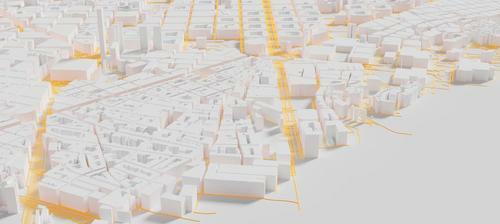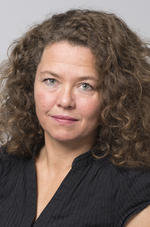Summary of results from the project
Lack of knowledge on small and medium-sized cities
Society has clear goals to reduce the growth in car traffic, the so-called zero growth objective. Many Norwegian cities seek to develop land use and transport systems in ways that contribute to this. They experience that most of the research in the field has been carried out in cities the size of Oslo or larger, and they need knowledge that is based on studies carried out in small and medium-sized cities. The project has contributed such knowledge. The research has also revealed that mechanisms known from studies in larger cities also work in smaller cities and produce similar results. Smaller cities might, hence, safely use knowledge and recommendations
A main finding from the project is that knowledge developed based on studies of large cities also applies to smaller cities. Smaller cities can therefore safely use such knowledge and recommendations that follow from it as a basis in planning and decision-making processes for land use development and development of transport systems in their cities.
Relations between urban structure factors and travel behavior
Relations between urban structure factors and travel behavior were investigated in 20 Norwegian cities areas, varying in size from Oslo (980 0000 inhabitants) to Elverum (15 000 inhabitants), through analyses of data from the national travel survey (Tennøy, Gundersen og Øksenholt, 2022).
The results showed lower car shares and higher public transport and walking shares with increasing density (population plus jobs) at city level. The proportion of journeys made by sustainable modes was higher to and from homes and workplaces located in the city centres and inner cities compared to the outer parts of the cities. The commuting distances were clearly shorter among those who live centrally compared to those who live in the outer parts of the cities. There was also a tendency for shorter commuting distances to centrally located workplaces. Travel to and from denser mixed-use zones outside the inner cities was longer and more car-based than to the inner city and city center, and in some cases, they were also longer and more car-based than to the outer parts of the cities.
A study showed that walkability in denser hubs around public transport nodes in Oslo, Bergen and Kristiansand varied widely (Knapskog, Hagen, Tennøy, Rynning, 2019). One explanation for the continued high use of cars on journeys to and from hubs, despite good public transport accessibility, seems to be the combination of very good car accessibility and the fact that it is not particularly pleasant to be a pedestrian in many of these areas. The main finding from this part of the project is that travel behavior in smaller cities varies with land use characteristics to the same patterns as in large cities and that the tendencies are weaker in the smaller cities.
Walking distance to public transport stops – and how important is it?
We also conducted surveys among employees in companies and among public transport passengers at stops in Oslo, Stavanger, Kristiansand and Hamar to find walking distances to and from public transport stops used on commutes (Tennøy, Knapskog og Wolday, 2022). The average walking distances to local public transport stops increased with city size, from 328 meters in Hamar to 520 meters in Oslo.
In discussions about what is acceptable walking distance, the 75th percentile, which shows how long 75% of passengers walk shorter than, may be more interesting. We concluded that 4-500 meters is acceptable walking distance to local public transport in cities smaller than Oslo and 5-600 meters for Oslo. Acceptable walking distance was longer for train journeys, about 800 metres. These distances are in line with what has been found in previous surveys in different parts of the world. In the surveys in Hamar and Kristiansand, it emerged that those who knew the public transport route they used or would use on their commute thought that the walking distances were short enough, and that higher frequency and fewer transfers were what was needed if they were to use public transport more frequently on commutes instead of car.
Effects of public transport improvements on patronage
This is in line with what we found when we examined the effects of changes in public transport systems in a number of Norwegian cities, where they had reorganized and simplified the systems in ways that provided higher frequency and more direct routes, but also longer walking distance to stops (Tennøy, 2022). The restructuring resulted in a significant increase in annual growth in passenger numbers. In several of the cities, the trend reversed from negative to positive change in passenger numbers.
How planning processes, plans and planners affect development
We studied documents and interviewed planners in Trondheim, Stavanger, Hamar and Haugesund to find out how processes related to area and transport plans affect the possibilities of achieving the goal of improving the competitiveness of public transport versus the car (Skartland, 2021). We took as our starting point existing knowledge of what characteristics of land use structure and transport systems contribute to improving public transport's competitiveness versus the car and evaluated existing plans in the four cities against this.
The main finding was that the plans in all cities contained some measures that would strengthen the competitiveness of public transport (such as densification and improvement of public transport) and others that would weaken it (such as urban sprawl and increased road capacity). We also found that the planners in the four cities had good state-of-the-art knowledge regarding how public transport systems and route structure should be developed to increase patronage, and that they proposed interventions in line with this (Skartland, 2022).
In a study of how politicians in Trondheim reflected on the fact that they adopted measures that they knew would reduce the chances of achieving the goals they had set, we also found that political goal conflicts were an important part of the answer (Øksenholt and Tennøy, 2018). They focused mostly on local and short-term problems and hoped that they could reduce the traffic growth that would come due to increased road capacity through mitigating measures.
Public transport is not designed to compete with the car in Portuguese cities
Researchers at the University of Porto and at TØI collaborated on the project. They investigated how planners in Portuguese cities work to strengthen the competitiveness of public transport versus the car. It was found that planners in Portuguese cities have recently begun to think that public transport can and should be developed in ways that help it compete with the private car, and that they so far are too busy with changes in the organization of responsibility for public transport to take hold. in this (Silva, Cadima, Castro & Tennøy, 2021).
The Portuguese researchers also contributed a report describing opportunities to use GIS tools to analyze the effects of changes in area structure and public transport systems on the competitiveness of public transport (Silva et al., 2020).
The results are summarised in Norwegian in TØI report 1860/2021
The project developed a database where we gathered knowledge about the effects of changes in public transport services on passenger numbers, and the plan is to develop this further.
We also made a description of how to proceed in a qualitative planning analysis.







